Org Chart Builder for Better Key Account Management
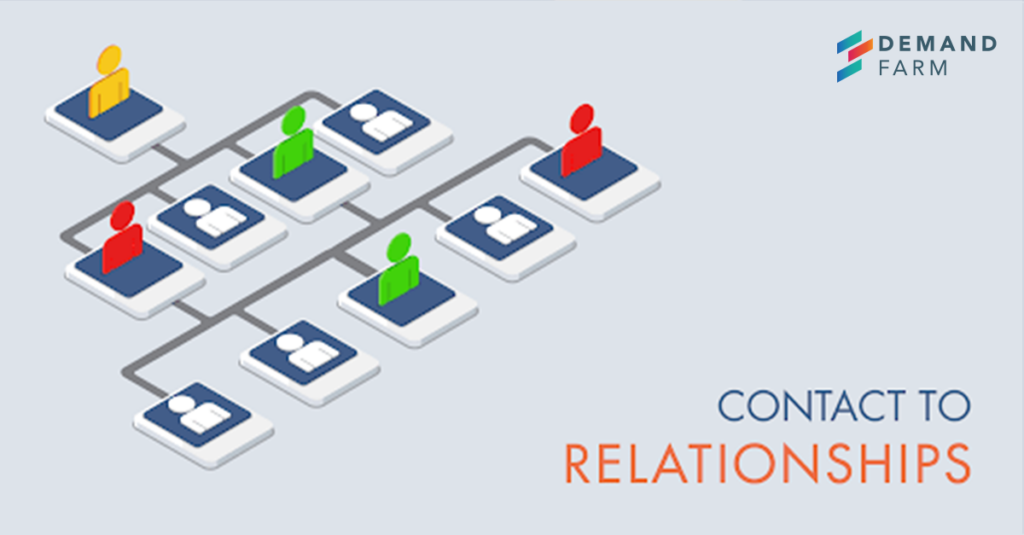
If I were to summarize the essence of key account management, it would be ‘value creation’ for the customer. To create value for the customer, a key account manager must understand the customer’s business well to figure out what challenges they may face and then create solutions to address those challenges using his own products, services, people, technology or even process. Before that, he needs to understand the customer’s organization in and out which can be actualized by org chart builder. Let’s say this is done. What’s next? The key account manager must now communicate this solution to the right people in the customer organization and that hope they believe in him and the solutions he proposes. But in order to do so, there are some questions that must be answered: Who are the right people to touch base with? Where do they lie in the formal hierarchy of their organization? What are the informal influences between those people? Who are our supporters and detractors today? Who controls what budgets? With whom have we won/lost opportunities in the past? Who are pursuing active opportunities today? Who is that champion who can introduce him to that ‘unaware’ contact with a big budget? Most of the answers to these questions are what we sometimes call ‘tribal knowledge’. It is in the heads of multiple people in our company. In Salesforce, all that can be seen is a list of the contacts in a very unappealing way. Consolidating all this knowledge into an interactive and visual heat map is integral. This is generally called an Org Chart for Key Accounts and is critical to not only building relationships but also in communicating their value to all key account managers who may need to leverage it. With an Org Chart Software, it becomes a lot easier to build interactive org charts that can be accessed by the entire key account management team. Org Charts are traditionally created to illustrate graphically the organization’s formal hierarchy. Its main purpose is to show the relationships and job positions of all the employees of the organization. Employee names and titles are depicted in boxes with lines linking them to departments and other employees. By looking at the chart, viewers can understand the structure of the organization, levels of seniority and where each employee lies in it. Various organizations can use org charts internally to do any of the following: Leaders can effectively manage growth/change Employees can understand how their work impacts the organization Improved communication An employee directory for ready reference Present other types of information, such as business entity structures and data hierarchies The best organizational chart is one that allows this hapless key account manager to understand how to navigate the murky waters of value addition for clients. I would love to say that this is the perfect white space opportunity for your business and you should rush out and make such software. But unfortunately, there is no denying that many have already understood the value of this type of an org chart builder (s). There are many options in the market currently. But with so many options of organizational chart builders how is a key account manager to decide which one is the best? Which is where we come in! We’ve collated a list of the key features an ideal org chart tool should certainly have to effectively help key account managers. Key features of Ideal Org Chart builder 1. Superior UI and UX The way a user interacts with the software and how his experience with it is has to be one of the most important features. It isn’t enough to just give great results, the user shouldn’t struggle to reach those results. Highly Visual An ideal organizational chart maker shouldn’t be list-oriented, it should be extremely visual. A user should be able to understand in a single glance exactly what relationships the different participants have with one another and the key account manager’s organization. Drag and Drop Functionality Key account managers are a busy lot and physically sifting through large volumes of data and changing properties can be much too time intensive. Having a simple and quick drag and drop functionality that allows users to drag and drop contacts into an org chart is definitely a feature to look out for. 2. Flexibility in Purchase Although an organizational chart software isn’t a big-ticket purchase like a comprehensive key account management software, flexibility in payment terms should definitely be sought out. Try before you Buy Isn’t it very annoying when you download the free version of the software and have to purchase it for additional features? Some Organizational Chart Software allows you the option to try a full version for free for a limited period of time and then purchase it if you like the functionality. Flexible Payment Options Org Chart Builders can have multiple payment options. Depending on feasibility you can either opt for a monthly, quarterly or yearly payment. These tailor-made payment plans can allow your organization to allocate limited resources elsewhere. 3. Key Account Manager Specific Minimal Data Entry Having a standalone Org Chart builder will require key account managers to input large volumes of data which is highly unnecessary in the golden age of Salesforce. A 100% Native to Salesforce app can allow you to use your Salesforce data to create org charts eliminating any additional data entry. Internal Influences A formal hierarchy can only take key account managers so far. In an organization some people may have a considerable influence on the budgetary allocation and some may also be in a position of influence with CXO level officials; despite being lower in the formal structure. An ideal Organizational Chart Software should represent this data visually to ensure a better understanding of which contacts to tap for key account managers. Relationship Strength In large organizations, there may be some contacts who may be ardent supporters of your organization and others may have proven to be detractors. Trying to tap
Relationship Mapping Strategies: A Complete Guide to Master Them

Upselling, cross-selling, and the entire scope for your revenue expansion hinge on understanding the reality of relationships within your key account. Customer relationship mapping serves as a strategy that helps visualize these connections, offering critical insights that traditional methods like organizational charts can’t capture. Relationship maps often employ a relationship heat map, which visualizes the strength of relationships using colours or line thickness. For instance, strong, frequent interactions might be represented by bold lines, while occasional contact might appear as thinner or dotted lines. These relationship mapping examples demonstrate how identifying key influencers within a client’s ecosystem can lead to more effective engagement for successful outcomes. Read on to learn how strategic relationship mapping tools help visualize account dynamics, offer valuable insights, and illustrate the informal networks that influence decision-making, workflow, and information dissemination. Imagine this: A key account manager might discover through relationship mapping that the decision-making process in a major client company involves not just the C-suite but also influential middle managers and technical leads who have significant sway over procurement choices. Armed with this insight, strategies can be tailored to engage all relevant stakeholders, ensuring comprehensive coverage and better alignment with the client’s needs. Importance of a Relationship Map A well-crafted relationship map provides a dynamic blueprint of the interplay between different stakeholders, helping organizations navigate internal politics, foster collaboration, and enhance communication. It’s precious in scenarios such as managing change, driving sales strategies, or implementing complex projects where understanding the influence and roles of various individuals can significantly impact outcomes. What is a Relationship Map? A relationship map is a visual representation of the connections between individuals or entities within an organization. Unlike a traditional org chart, which outlines hierarchical reporting lines, a relationship map highlights informal networks—showing who communicates with whom, who holds influence, and how these connections impact business processes. This strategic tool goes beyond surface-level interactions, uncovering hidden influences and connections that can drive decision-making, shape workflows, and even impact customer relationships. Understanding these informal networks allows key account managers to target the right people with the right messages, ensuring that sales strategies and stakeholder engagements are perfectly aligned with internal dynamics. Key Components of Relationship Mapping and How to create a relationship map? At its core, a relationship map consists of two fundamental elements: nodes and links. These components work together to provide a visual representation of the network within and around an organization. Nodes represent individuals or entities. In a business context, a node could be a key account manager, a client contact, or even an entire department. The positioning and size of each node might vary to reflect the entity’s role or significance within the network. For instance, a node representing a CEO might be more central and larger compared to one representing a junior staff member, signaling the CEO’s broader influence across the organization. Links connect the nodes and show the relationships between them. These relationships could be professional, such as reporting lines or collaboration histories, or personal, reflecting mentorship roles or informal communication channels. The strength of a link often denotes the intensity or frequency of interactions between the nodes. For example, a thick line might indicate regular collaboration on projects, while a dotted line might show occasional communication. Additionally, attributes of these relationships are critical for a deeper understanding of the network dynamics. These attributes include: Strength: How strong is the influence or dependency between entities? A strong relationship might mean frequent interaction and significant influence on decision-making processes. Frequency of Contact: How often do the entities interact? Regular weekly meetings might suggest a closer relationship compared to quarterly check-ins. Influence Level: What is the level of influence of one entity over another? For example, a senior director likely has a high influence level over their direct reports but might also wield considerable informal influence over other departments In practice, consider a relationship map created for a sales team. It might reveal that a salesperson frequently collaborates with the marketing team more than their direct sales colleagues, influencing product promotion strategies significantly. This insight can help managers adjust roles or support structures to optimize team performance. The 6-step Process to Create a Business Relationship Mapping 1. Identify Objectives Before you start mapping, clarify what you hope to accomplish. Objectives can vary widely, from improving sales strategies to enhancing internal communications or managing stakeholder relationships. For instance, a company might use a relationship map to identify key decision-makers in a client company to tailor their sales approach effectively. Every client-side team will have various positions, which are demands made by certain individuals or parties. These positions stem from the multiple strong reasons that parties will have. This could be their needs, concerns, hopes, desires, and fears. The closer your agreement is to the overall interest, the better the deal. 2. Gather Data Collect detailed information about the individuals and relationships you need to include in the map. This involves not just names and titles but also the nature of their connections, the history of their interactions, and their influence levels. Tools like surveys, interviews, and internal records can be useful here. In practice, a project manager might gather data from team members about their previous collaborations and areas of expertise. The relevance or the pecking order of the individual or group is a subjective measure that will keep changing in the client’s lifecycle. This is why keeping this map updated is so important. This is helpful because by clarifying your interests before a negotiation, you will be in a better position to define your goals for the negotiation. Using this list, you can create a diagram that speaks about all the stakeholder groups and the individuals within them. This diagram should give you a fairly good idea for everyone who is involved. 3. Identify the Interests of the stakeholders within the account After having made a list of all the relevant players, you must now analyze them. You will have to jot down these client interests
Salesforce Org Chart – For Contact Hierarchy and Relationship Mapping
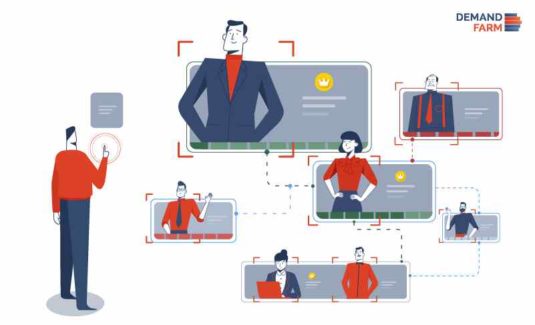
Org Chart and Relationship Mapping in Salesforce with DemandFarm Account Management is evolving every day. If you are a part of the sales/account management team, a better understanding of your client and improving the strategic relationship with them is indispensable to cracking any deal. Do you think a small tool – Org Chart builder in Salesforce could be your savior in this? Contacts being the heart of your client’s organization, managing them efficiently is critical for which Salesforce has become a ‘default’ in most sales-driven and account-driven organizations. While the baton is with you, over a while contact data gets ‘muddled’ useless. Meanwhile, still betting on PPTs and whiteboards will land you at a high risk of losing your valuable clients to competitors. It can also lead to slow decision-making, missed growth opportunities, and avoidable waste of effort. So, strategizing accounts, equipping yourself with the right tools, and efficiently managing your tasks will be the key to being on track. Salesforce Account Planning could provide much-needed clarity and help you manage your accounts more profitably. Why do you need a Salesforce Organization Chart? 1. Visual Map of Contacts Salesforce.com functions as the go-to system for all aspects of a customer relationship. But David Taber, the author of the Prentice Hall book, “Salesforce.com Secrets of Success,” remarked rightly in this post how quickly data gets discounted in salesforce. This happens because of the following reasons: Lack of process in adding customer data Ever-changing hands in marketing, sales, and support Omission and commission errors To be fair to users, the existing user interface showcasing contacts in a ‘list view does not help either. It seems fine until the number of contacts is in single digits, but not when contacts grow beyond a manageable list. That is when the need for visual relationship mapping arises. The last three salesforce organization chart software inquiries at DemandFarm had a very simple requirement. They just wanted a tool to display their salesforce contacts visually in the form of an organization chart. 2. Handover and Onboarding I just got off an org chart demo with a sales operations team. Would you guess their biggest complaint in managing contacts within Salesforce? It isn’t to do with managing contacts. It is when an account manager or a sales rep leaves. A simple process to hand over accounts always seems missing. The issues do not stop at handover. When a new account manager joins, it feels as if the current account is in a state of mess. A neatly populated Salesforce org chart builder could make this transition frictionless and even more exciting, maybe. 3. Sales Enablement Initiatives Sales operations and salesforce admin teams work together to help sales teams spend more time on quality sales conversations than the operational hassles of setting up systems like Salesforce. In this endeavor, sales ops teams are always on the lookout for tools and processes that improve the functioning of sales and account teams. The simplicity of the best org chart software that is native to Salesforce is a compelling use case. DemandFarm’s Organization Chart in Salesforce DemandFarm’s Salesforce Organization Chart is a powerful interactive tool that is native to CRM i.e, you require zero integration. Key Account Management in Salesforce becomes a breeze with Demandfarm. The tool is so simple that you can build a Hierarchy map of your accounts in just a few minutes by dragging and dropping them with pre-built templates. Organization Chart Features 1. Hierarchy Mapping Hierarchy mapping is a visual representation of the client’s organization which can lend you a lot of deep insights about their profile like white space opportunities and associated budget. 2. Influence Mapping Influence mapping helps you understand the kind of influences each contact has over the other inside the client’s organization. With this, you can upsell and increase your revenue. 3. Relationship Mapping Relationship mapping gives you an understanding of the relationship you have with each of the contacts in the client’s organization. Based on the relationship/affinity, you can plan the right approach to avoid any mess. 4. Power Mapping Power Mapping can help you in knowing the right person with the highest decision power in your client’s organization. To shorten the sales cycle and close the deal, is very critical. Conclusion Building the Salesforce Org Chart is the first step toward effective key account management (KAM). Without the Salesforce Org Chart, there is no Strategic Account Management. Let’s start building Organization Chart for all large key accounts now. It is a journey. Over some time, this Org Chart will be your most potent weapon to defend and grow revenues in the account. It is not one time nor is built by one person. It is a collaborative effort by multiple people over a while. Hence it has to be easy to build within Salesforce. DemandFarm’s Org Chart is one such tool. Go ahead and take a free trial today!
Impact of Org chart on Key account management
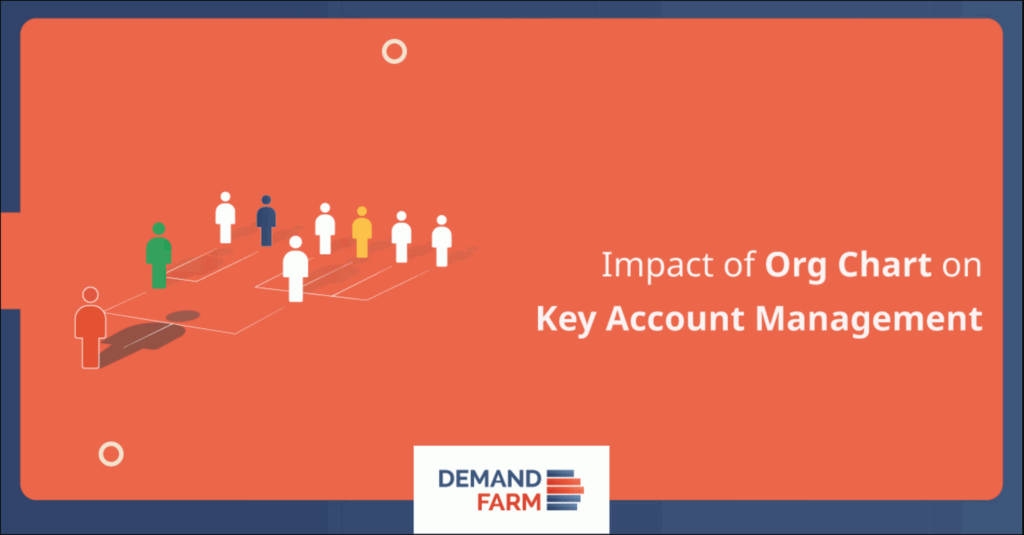
Are you a key account manager who brings a lion’s share of the revenue for your organization? or Are you a sales ops manager who backs the sales team to come up with flying colors? You guys are the real heroes of your organizations. Maybe that’s why the challenges faced by you are critical. Do you believe that a 19th-century management tool is solving almost all the challenges faced by you in this 21st century? It’s true and not a joke. “If no Org Chart, then no Key Account Management” Org Chart is the smart tool that does all the wonders. It is a visual representation of the structure of an organization with some extensive information about the contacts. It is dynamically evolving every day with new features added up to strengthen its potential. DemandFarm’s Org chart is one such powerful tool with lots of updates made to benefit modern key account managers About Demand Farm: DemandFarm is a Key Account Management Software system solely focused on addressing the unique challenges that Key Account professionals face. With focused functionality, the software allows all stakeholders of strategic, Key, and global account programs to intensively cultivate, build, harvest, and profitably grow the organization’s most valuable relationships. Power of DemandFarm’s Org Chart Software : Hierarchy Mapping: Know who reports to whom among the contacts. Relationship Mapping: Know who are the supporters, detractors, and neutral contacts. Influence Mapping: Know who influences whom inside the organizations. Power Mapping: Know the power of each contact i.e, who calls the shot. ‘From Contacts to relationships to key accounts’ 250+ leading companies in various industries are leveraging DemandFarm’s Org chart builder to re-imagine key account management and growing their strategic relationships with key accounts. One such company is Veracode. Veracode uses Salesforce Org chart About Veracode Veracode is an application security company that provides an automated cloud-based service for securing web, mobile, and third-party enterprise applications. Veracode offers multiple security analysis technologies on a single platform, including static analysis, dynamic analysis, mobile application behavioral analysis, and software composition analysis.
Key Account Management sans Org Chart
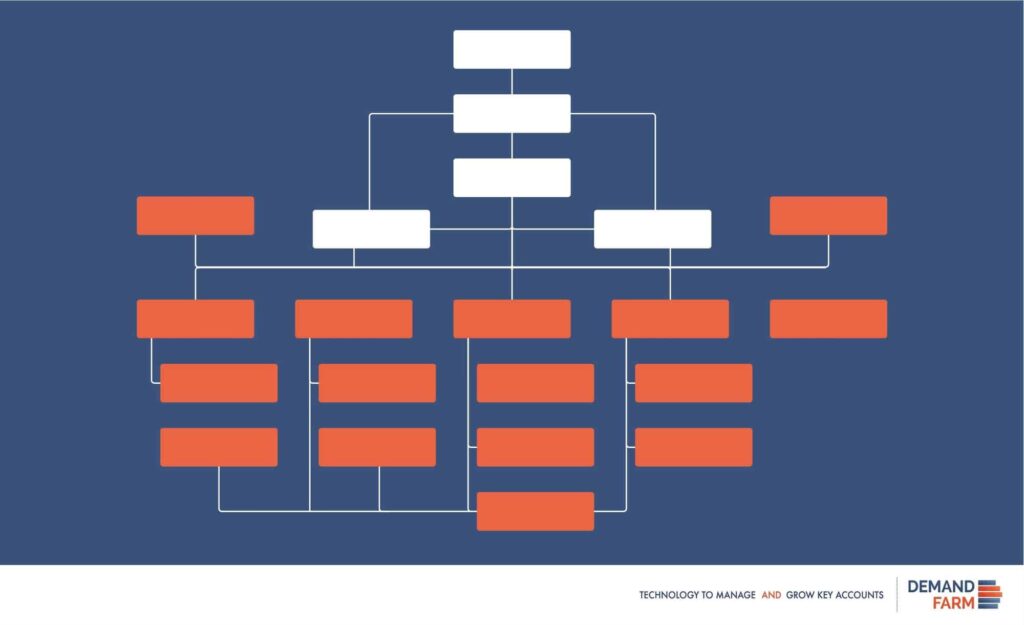
What does a 19th-century management tool get to do with modern-day key account management.It is not surprising that the org chart never gets its due. Partly because it is just that – an org chart. How about looking at the org chart as a key account management enabler?Interesting, right?I was as surprised as you are. The current version of the org chart that your business is using may not be equipped to do so. But, org charts do hold that power. If you aren’t using any, even better. You could give a new growth dimension to your existing key account management process. To understand how an org chart software enables key accounts, it is vital to understand the ‘powerful’ role of the key account manager (KAM). The Key Account Manager (KAM) The KAM is the face of the supplier to the key account. Over the many months and years, the KAM gathers many insights across : Business and market environment Relationships amongst the key account stakeholders Context of the relationships with the suppliers Assessment of internal capabilities to deliver towards common goals with the key accounts All this is powerful knowledge that unfortunately resides only with the KAM. If lucky, some of this knowledge will get documented, only to go missing in someone’s hard drive (or cloud).No wonder when key account managers leave organizations, they carry the Key Accounts with them. Not fair. It just doesn’t make sense. A key account management org chart is capable of addressing this shortcoming. And if such an org chart leverages cutting-edge modern technology to integrate with HR and CRM systems, it could go beyond the human prowess of a KAM. A modern-day org chart will not only answer key questions on KAM relationships, it will also show and prompt the necessary business action. No Org Chart, No Key Account Management To help DemandFarm’s audience understand the value of a key account management org chart, an eBook titled “No Org Chart, No KAM” is being released. This eBook covers the following : The Origins of Org Chart – This historical context will help establish the prevalence of the Org Chart as a potent management tool that has transformed business and society. Strategic Role of Org Chart in Key Account Management – It is a misconception that an Org Chart is only an HR tool. The section of the book attempts to provide a new context. Org charts can add valuable insights into the depth of relationships within key accounts. An Org Chart is not enough – A simple key account management org chart on paper or a PPT is a good start. But what is truly needed is a dynamic ever-changing org chart builder that represents hierarchy, influence, power equations, and relationships. KAM Power of an Org Chart – An org chart for strategic account management done well has the power to do better than ‘human’ account managers. It ensures continuity. It institutionalizes key account management. It is after all just an Org Chart. It may be times for a new perspective. Do read the eBook. Also, note that DemandFarm offers Salesforce Org chart and MS Dynamics Org chart
The Best Org Chart Software doesn’t help KAM
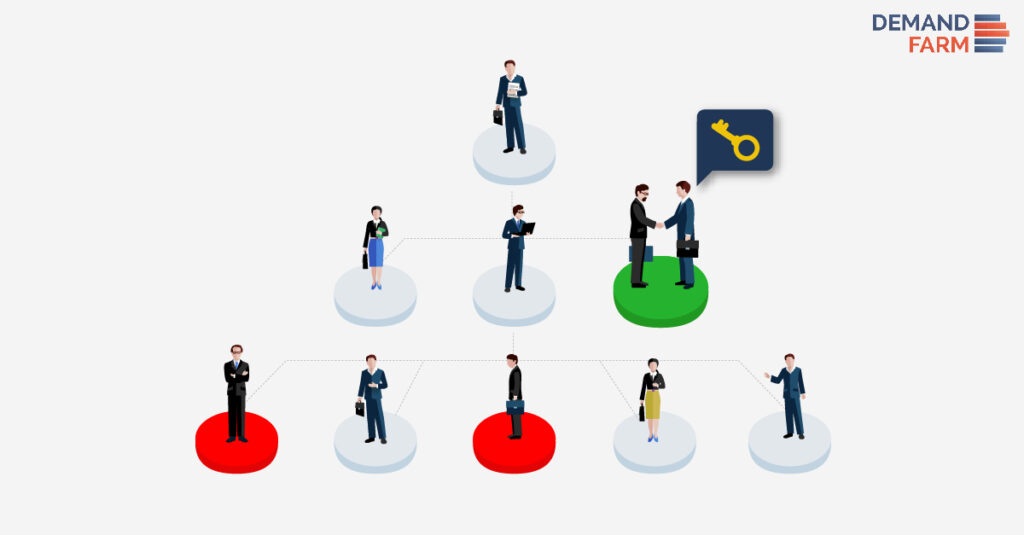
If you are wondering what is the connection between what an org chart software does and key account management, I encourage you to read one of our previous blogs. The connection isn’t apparent. But, organizational charting is critical to key account management success. The org chart software market is crowded, fragmented, and under-penetrated. Not all organizations need sophisticated software to draw organizational charts. Excel, PPT, and good old paper still do the work, pretty much. I am sure you don’t want me to write about the reckless org chart printouts that users take. Let us dig a little deeper. A search for “Best Org Chart Software” throws up many options. At one end you have enterprise versions like LucidChart, software to support Visio to many products for small businesses that are also free. Can these aid key account management and its associated complexities? I am afraid, “No”. The following are the reasons why the best org chart software in the market does not help Key Account Management at all. Purpose of the Best Org Chart Software Org Chart Software is not designed for Key Account Management. The software’s purpose is very different. Let me illustrate this with an example. Turn to any of the software listing websites like Capterra, Software Advice, G2Crowd. Did you notice that Org Chart Software is usually a sub-category under Human Resources Software? What does that tell you? The org chart software available in the market caters to HR requirements. The software features, at best, address the operational problems in building business-friendly usable organizational charts. Key Account Management Insights Org Chart Software for Better Key Account Management explained the role of a specific type of org chart that would be a valuable aid for key account managers. Key account managers require an account facing an external organizational chart. Such an org chart builder must highlight the possibility of value creation for the KAM’s account. The existing software in the market cannot serve this purpose and innovations in KAM technology over the years have experienced a dormant growth rate. Because they are inherently passive and do not capture the changing situations under which KAMs operate. An Organizational Chart for key account management has very specific requirements that are often nuanced. Salesforce Integration Businesses with established key account management practices also happen to be Salesforce power users. The best organizational chart software for key account management should sit on top of existing CRM systems like Salesforce. This would give it the necessary prowess to render org charts dynamically, as demanded by business. DemandFarm offers Salesforce Organization chart and MS Dynamics Org chart software in the market integrates well only with ERP systems and other HR software. Key Account Management needs its own Org Chart DemandFarm’s blog has always made a case for a continuous strategic approach to key account management. Understanding the role of stakeholders that comprise an account is a valuable piece of information. As stakeholders increase within an account, insights tend to decay. This adds ambiguity to decision-making. At times, it could also mean compromising revenue goals. Thus, impacting even the business plan. A good organizational chart for key account management is just good business. Isn’t it?
Best Organizational Chart Software for Key Account Management
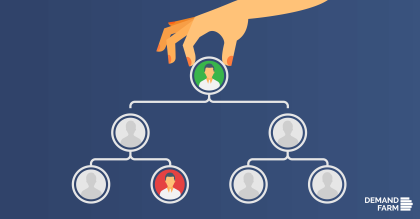
Org Charts are traditionally created to illustrate graphically the organization’s formal hierarchy. Its main purpose is to show the relationships and job positions of all the employees of the organization. Employee names and titles are depicted in boxes with lines linking them to departments and other employees. By looking at the chart, viewers can understand the structure of the organization, levels of seniority, and where each employee lies in it. Various organizations can use org charts internally to do any of the following: Leaders can effectively manage growth/change Employees can understand how their work impacts the organization Improved communication An employee directory for ready reference Present other types of information, such as business entity structures and data hierarchies Org Charts can be quite helpful internally, but did you think that they would be even more so externally? We, at DemandFarm, believe that there are better uses for it than just creating a formal hierarchy for internal use. As discussed in this blog the essence of key account management is value creation. But what if a key account manager can create an incredible value proposition, but doesn’t know who to tap into the client organization to ensure that it is given a fighting chance? The best organizational software is one that allows this hapless key account manager to understand how to navigate the murky waters of value addition for clients. I would love to say that this is the perfect business opportunity and you should rush out and make such software. But unfortunately, there is no denying that many have already understood the value of this type of org chart software. There are many options in the market currently. But with so many options of organization chart software how is a key account manager to decide which one is the best? Which is where we come in! We’ve collated a list of the key features that the best of the best organizational chart software should certainly have to effectively help key account managers. Superior UI and UX The way a user interacts with the software and how his experience with it is has to be one of the most important features. It isn’t enough to just give great results, the user shouldn’t struggle to reach those results. Highly Visual An ideal organization chart software shouldn’t be list-oriented, it should be extremely visual. A user should be able to understand in a single glance exactly what relationships the different participants have with one another and the key account manager’s organization. Drag and Drop Functionality Key account managers are a busy lot and physically sifting through large volumes of data and changing properties can be much too time intensive. Having a simple and quick drag and drop functionality that allows users to drag and drop contacts into an org chart is a feature to look out for. Flexibility in Purchase Although an organizational chart software isn’t a big-ticket purchase like a comprehensive key account management software, flexibility in payment terms should be sought out. Try before you Buy Isn’t it very annoying when you download the free version of the software and have to purchase it for additional features? Some Organizational Chart Software allows you the option to try a full version for free for a limited period and then purchase it if you like the functionality. Flexible Payment Options Organizational Chart Software can have multiple payment options. Depending on feasibility you can either opt for a monthly, quarterly, or yearly payment. These tailor-made payment plans can allow your organization to allocate limited resources elsewhere. Key Account Manager Specific Minimal Data Entry Having a standalone Org Chart Software will require key account managers to input large volumes of data which is highly unnecessary in the golden age of Salesforce. A 100% Native to Salesforce app can allow you to use your Salesforce data to create org charts eliminating any additional data entry. Internal Influences A formal hierarchy can only take key account managers so far. In an organization some people may have a considerable influence on the budgetary allocation and some may also be in a position of influence with CXO level officials; despite being lower in the formal structure. An ideal Organizational Chart Software should represent this data visually to ensure a better understanding of which contacts to tap for key account managers. Relationship Strength In large organizations, there may be some contacts who may be ardent supporters of your organization and others may have proven to be detractors. Trying to tap a detractor can lead to a key account manager running around in circles. The ideal organization chart software should clearly define all champions, promoters, and detractors to ensure that key account managers know exactly who to approach. Accessibility across Teams The biggest problem with key account management teams in the presence of “tribal knowledge“. A key account manager handling a particularly prime account may take with him this tribal knowledge if and when he leaves the organization. If the organization chart he created can be accessible to the entire key account management team, the loss of data can be limited to a large extent. These are just some of the features we think that every Organizational Chart Software should have but what do you think? Do let us know in the comments below!